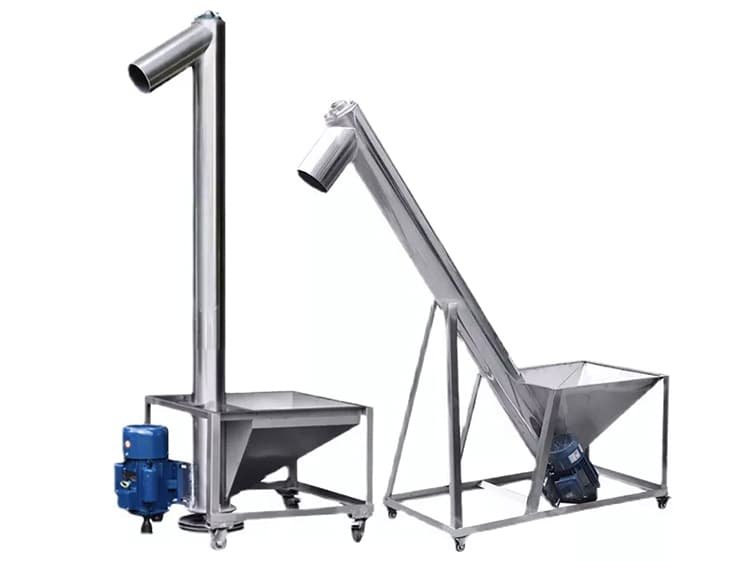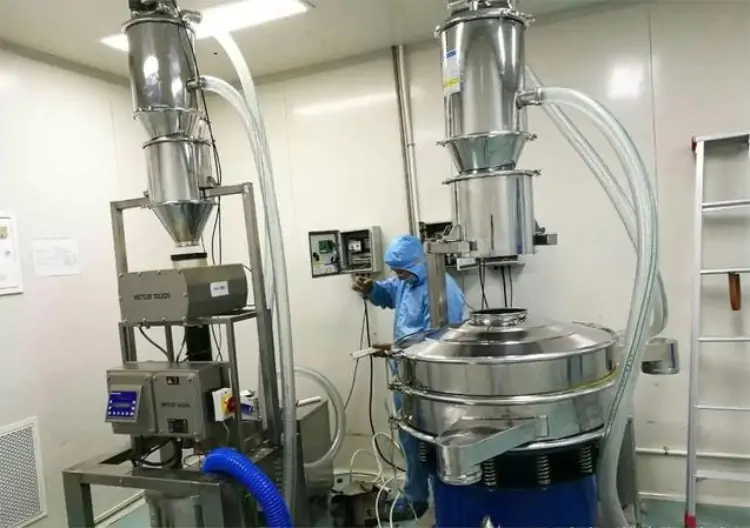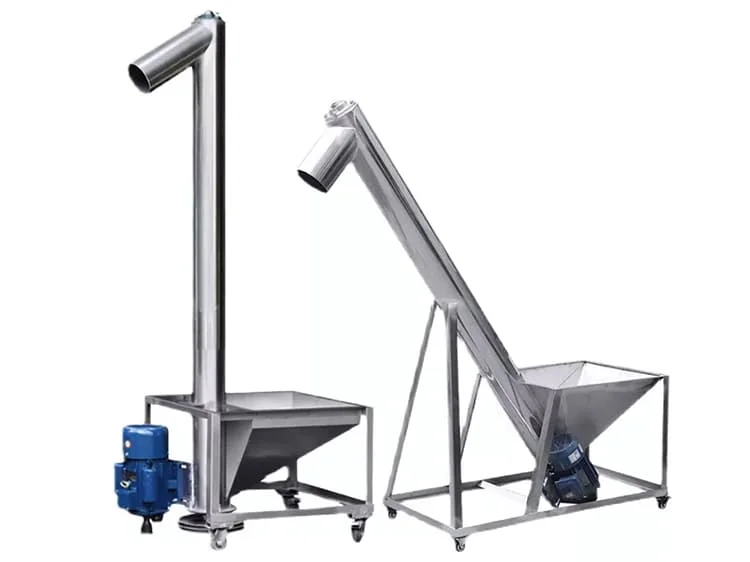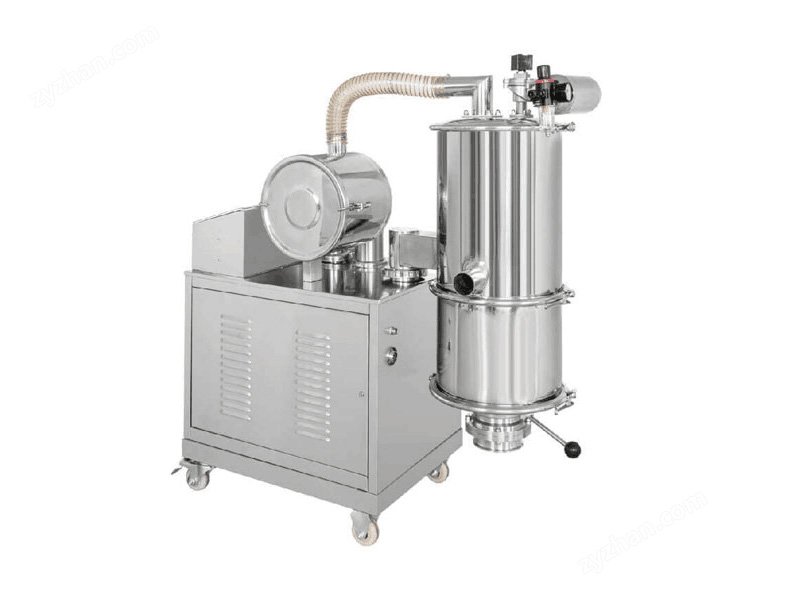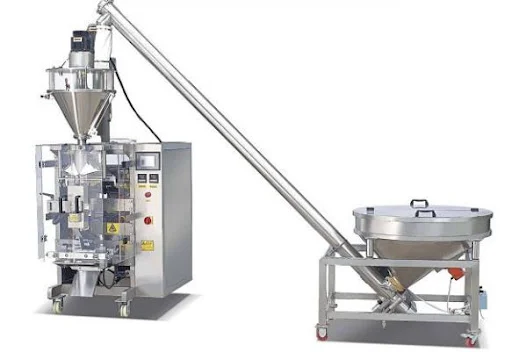Vacuum feeding machine, also known as vacuum conveyor, negative pressure suction machine, it is the use of vacuum suction to transfer granular and powdery materials equipment. Commonly used in powder, granular materials in automated transport, the main application of the industry are chemical, pharmaceutical, food, metallurgy, building materials, agriculture and other light and heavy industry. Today we come together to understand its working principle and its accessories and their role:
Vacuum Feeding machine Working Principle
The working principle of vacuum conveyor can be divided into four steps:
The first is the vacuum stage. The equipment extracts the air in the sealed pipeline through the vacuum pump or vacuum generator, forming a negative pressure environment inside the system. When the vacuum reaches the set value, the suction nozzle will produce strong suction, at this time the system has the basic conditions of material transport. The key to this stage is to establish a stable negative pressure difference, usually the vacuum can reach -0.4 to -0.6MPa, for the subsequent material conveying power.
Next is the material inhalation process. Under the action of air pressure difference, the outside air will carry the material through the suction nozzle into the conveying pipe. The material forms a uniform material-air mixing flow in the pipeline, and moves rapidly at a speed of 10-30m/s. For fine powder materials that are easy to raise dust, the material will be conveyed through the suction nozzle. For the fine powder materials which are easy to raise dust, the system will be equipped with special dustproof device, so that the materials can enter smoothly without leakage. The whole inhalation process is completely sealed, avoiding the contact between the material and the external environment.
Then it is the gas material separation link. After the mixed gas stream enters the separation bin, due to the sudden expansion of space, the speed of the gas stream decreases abruptly, and most of the material settles naturally under the effect of gravity. The remaining dust-containing gas is then separated for the second time through a precision filter with a filtration accuracy of 0.2-5 microns. The separated clean air is discharged through vacuum pump, while the material is accumulated at the bottom of the silo, ready for subsequent discharge.
Finally, the material discharge stage. When the material level sensor detects that the material reaches a predetermined position, the discharge valve opens automatically. At this time, the system will briefly release the vacuum, and the material will be discharged smoothly under the effect of gravity. After the discharge is completed, the valve closes immediately, the system re-establishes the vacuum and starts the next working cycle. The whole process is fully automated without human intervention, allowing continuous and efficient material conveying.
Video demonstration of the working principle
The structural composition of vacuum feeding machine and the role of accessories
Vacuum feeding machine is mainly composed of vacuum pump, vacuum hopper, filter, blowback device, discharge mechanism and other components, each accessory in the conveying process plays a different role.
1. Vacuum pump
Vacuum pump is the core power source of the equipment, responsible for generating negative pressure in the system to form the vacuum environment required for material suction. Common oil-free vacuum pumps can convey materials in the process of pollution-free, suitable for food, pharmaceutical and other high health standards industry. Its stable pumping capacity directly affects the suction speed and conveying efficiency.
2. Vacuum hopper
Vacuum hopper is a temporary storage bin for materials, which adopts airtight design to prevent the outside air from entering, so that there is no dust and no leakage in the conveying process. It is usually equipped with level sensors to automatically control the feeding and discharging of materials, which can continuously and stably supply materials.
3. Filter
Filter is used to separate material from air and prevent powder from entering the vacuum pump and causing damage. Common filter element materials include polyester film, PE, stainless steel or titanium, which can be selected according to the material characteristics. The filtration accuracy directly affects the operating efficiency of the system and the cleaning cycle of the filter element.
4. Blowback device
The blowback device cleans the filter element by compressed air pulse to prevent material clogging and maintain filtration efficiency. Every time when discharging, the system automatically triggers the blowback to prolong the service life of the filter element and reduce the frequency of manual maintenance.
5. Pneumatic discharge door
The discharge door is controlled by a cylinder and opens automatically after the vacuum is released so that the material can be discharged smoothly. Its sealing performance directly affects the system’s ability to maintain vacuum, ensuring stable and reliable conveying process.
6. Suction nozzle and conveying hose
The suction nozzle is responsible for sucking in materials, usually made of stainless steel or wear-resistant material to adapt to the characteristics of different materials. The conveying hose connects all the components, which is flexible, pressure-resistant and corrosion-resistant to ensure the smooth flow of materials in a closed environment.

These accessories work together to make the vacuum feeding machine can be efficient, dust-free, automated material conveying, often used in chemical, pharmaceutical, food and many other industries!
Common misunderstandings and truths of users
Misunderstanding 1: Don’t replace accessories if they can be used.
Truth: Overuse of filter elements will increase the load of the vacuum pump and increase electricity bills a lot.
Misunderstanding 2: All parts are purchased from the original factory.
Truth: General parts such as seals and pipes can choose high-quality third-party brands (must meet ISO standards), which reduces costs by 40%.
Misunderstanding 3: Maintenance is to replace parts.
Truth: Daily cleaning and parameter optimization are more important! For example: After each shutdown, run the machine idle for 10 seconds to clear the pipe residue (reduce the risk of blockage)
Reduce the working pressure of the vacuum pump by 0.1 bar in summer (to prevent overheating loss)
Conclusion: Choose professionalism, save worry and money
The efficiency and life of the vacuum feeder depends 30% on the quality of the equipment and 70% on proper use and maintenance. Sanyuantang as a vacuum feeding machine manufacturer with 30 years of industry experience, we provide technical training + lifelong maintenance guidance, and adopt standardized component design (reducing maintenance costs by 40%).
If you need to obtain the “Vacuum Feeding Machine Selection and Maintenance Manual” or customized solutions, please consult!

Related Articles
- Vacuum Feeder Applications in Pharmaceutical Industry
- Efficient Vacuum Feeder Conveyor: Increase Productivity and Precision
- How to Choose an Right Inclined Screw Conveyor Model?
- How to Select a Suitable Vibrating Screen?
- What is Blender in Pharma Industry
- V Blender Working Principle, Design, Parts, Capacity
- How To Use V Mixer Machine And Precautions
